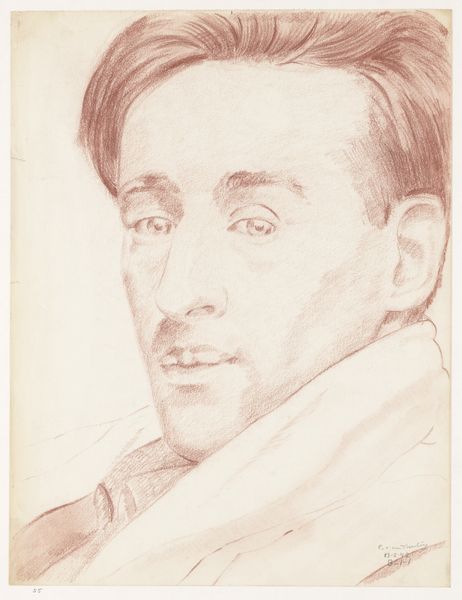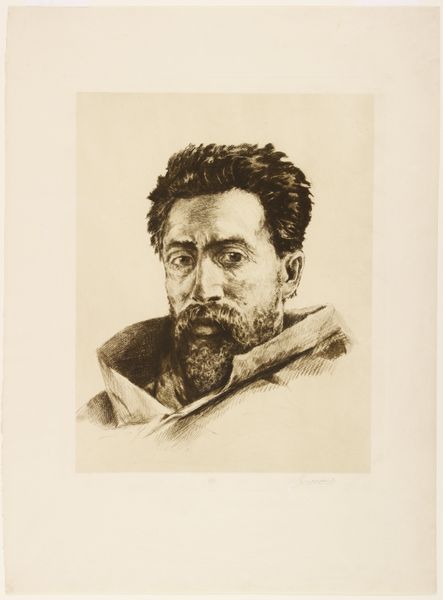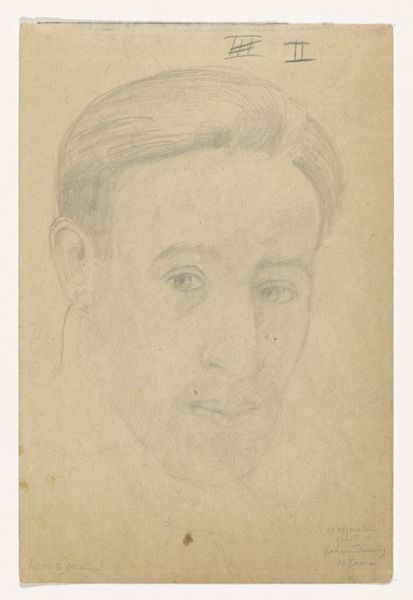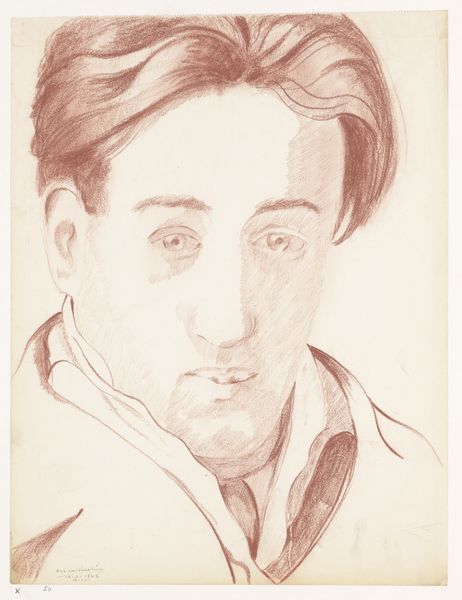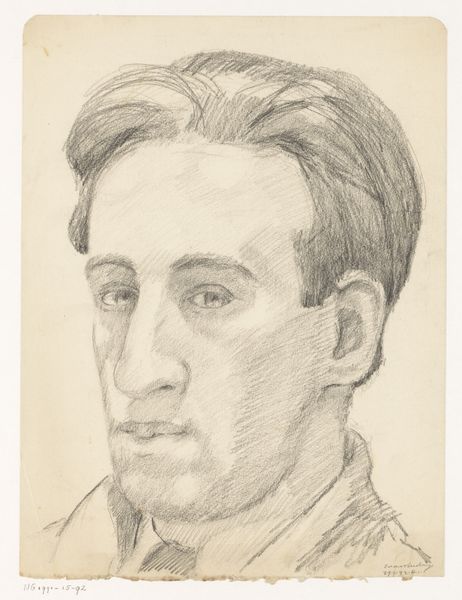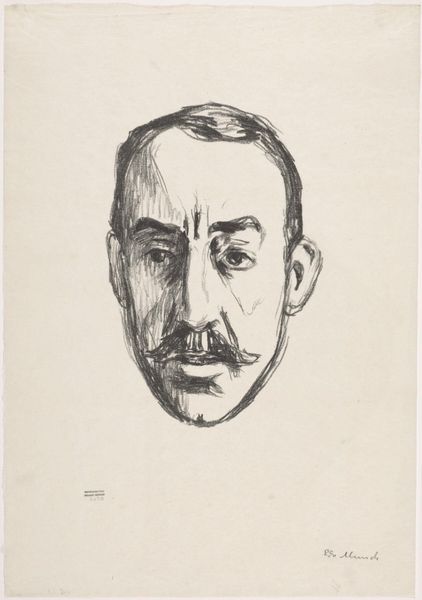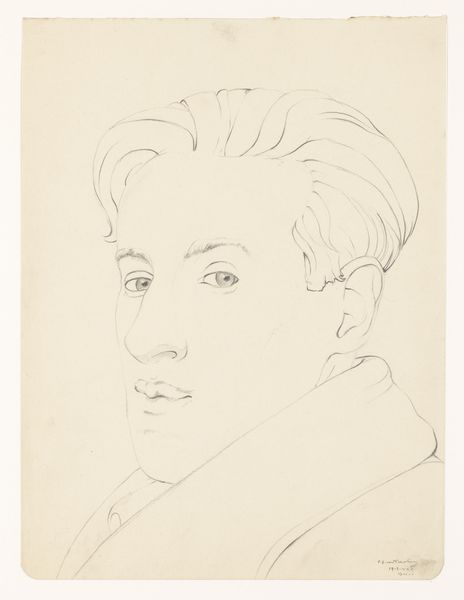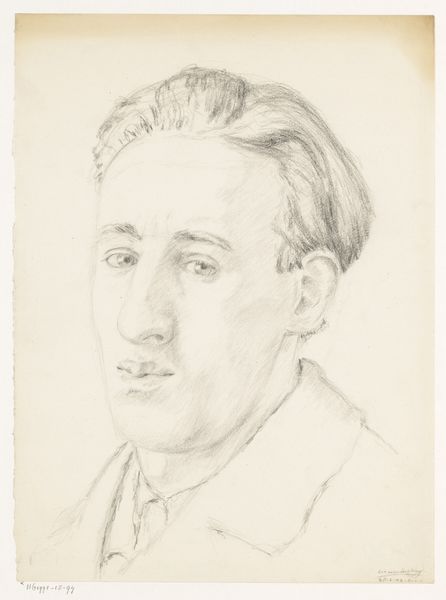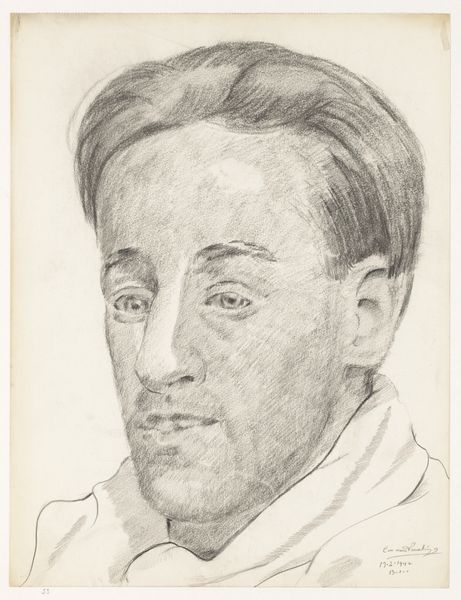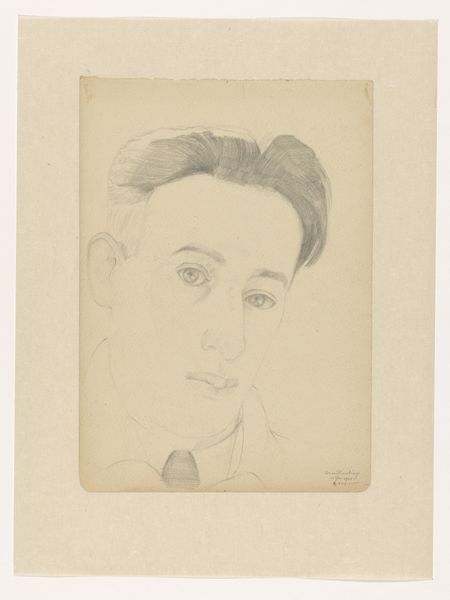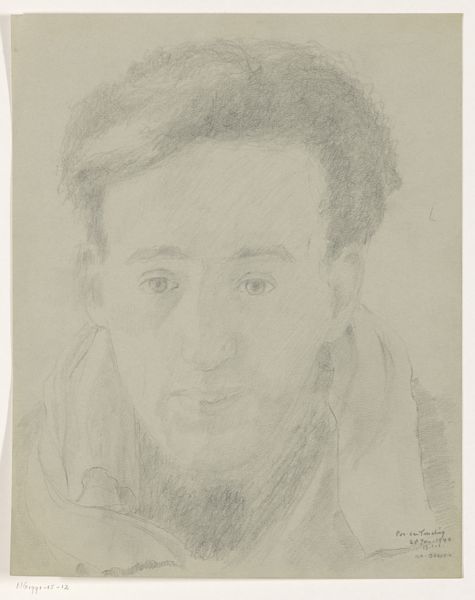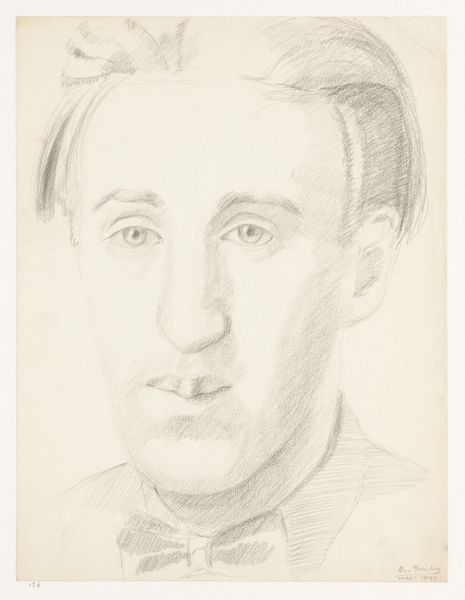
drawing, print, etching, graphite
#
portrait
#
drawing
# print
#
etching
#
graphite
#
realism
Dimensions: height 180 mm, width 130 mm
Copyright: Rijks Museum: Open Domain
Curator: I’m struck immediately by the intimacy of this small etching. Editor: Indeed. Before us is Angèle Delasalle's “Portret van een onbekende man,” created in 1908. It's currently held at the Rijksmuseum and rendered through a combination of etching and graphite, which provides a unique texture. Curator: That unique texture, the marks left by the tools on the printing plate—you can really see the hand of the artist at work. The close cropping puts you face to face with this unknown sitter, demanding your attention. Who do you imagine him to be? Editor: Well, given the period, and the emerging social mobility of the early 20th century, I speculate about his status. Was this an official portrait commissioned by a rising member of the bourgeoisie? Or was it perhaps part of a series by Delasalle, documenting everyday citizens? It also begs the question, who gets remembered and how? Curator: Good questions! From a material perspective, the printmaking process allows for multiples. This accessibility challenges the art market structures that privilege unique paintings. The materials themselves – the metal plate, the ink, the press – speak of industrial techniques democratizing image production. Editor: I see what you mean. And those repeated images circulate, contributing to visual culture and perhaps even shaping collective memory. Think about how mass-produced images impacted ideas about race, class, gender... this simple portrait could have played a small part in a larger visual dialogue. Curator: It makes you consider labor too. The etcher's craft, the printer's skill – these are often unseen contributions to the final work we admire. Did Delasalle do the printing herself, or was this a collaborative process? And how did the original materials influence the tone and style? Editor: Exactly. And that production question could lead to further research and help reveal details about the place of the artist at the moment. Curator: Pondering these practical processes changes how we perceive an art object's meaning. It grounds the work in tangible reality. Editor: For me, that's the most satisfying aspect – using these objects as portals to explore the complex political and social worlds they reflect, intentionally or otherwise. Curator: It all shows how what seems a small and seemingly simple work connects to much larger realities. Editor: Precisely. This portrait offers a poignant opportunity for contemplation, linking a tangible object to larger questions about representation and production.
Comments
No comments
Be the first to comment and join the conversation on the ultimate creative platform.

